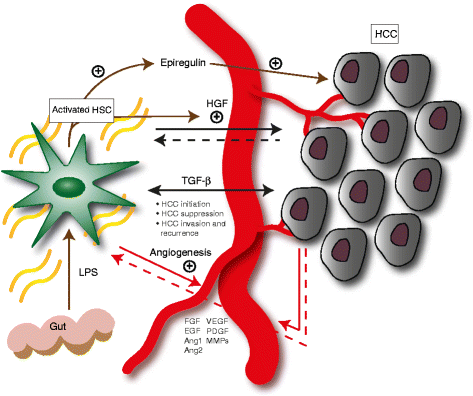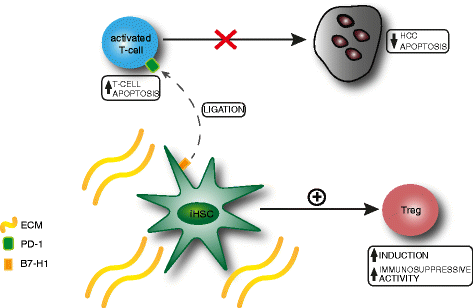Hepatic stellate cells: central modulators of hepatic carcinogenesis
- PMID: 26013123
- PMCID: PMC4445994
- DOI: 10.1186/s12876-015-0291-5
Hepatic stellate cells: central modulators of hepatic carcinogenesis
Abstract
Hepatocellular carcinoma (HCC) represents the second most common cause of cancer-related death worldwide, and is increasing in incidence. Currently, our therapeutic repertoire for the treatment of HCC is severely limited, and therefore effective new therapies are urgently required. Recently, there has been increasing interest focusing on the cellular and molecular interactions between cancer cells and their microenvironment. HCC represents a unique opportunity to study the relationship between a diseased stroma and promotion of carcinogenesis, as 90% of HCCs arise in a cirrhotic liver. Hepatic stellate cells (HSC) are the major source of extracellular proteins during fibrogenesis, and may directly, or via secreted products, contribute to tumour initiation and progression. In this review we explore the complex cellular and molecular interplay between HSC biology and hepatocarcinogenesis. We focus on the molecular mechanisms by which HSC modulate HCC growth, immune cell evasion and angiogenesis. This is followed by a discussion of recent progress in the field in understanding the mechanistic crosstalk between HSC and HCC, and the pathways that are potentially amenable to therapeutic intervention. Furthermore, we summarise the exciting recent developments in strategies to target HSC specifically, and novel techniques to deliver pharmaceutical agents directly to HSC, potentially allowing tailored, cell-specific therapy for HCC.
Figures



References
Publication types
MeSH terms
Substances
Grants and funding
LinkOut - more resources
Full Text Sources
Other Literature Sources
Medical

